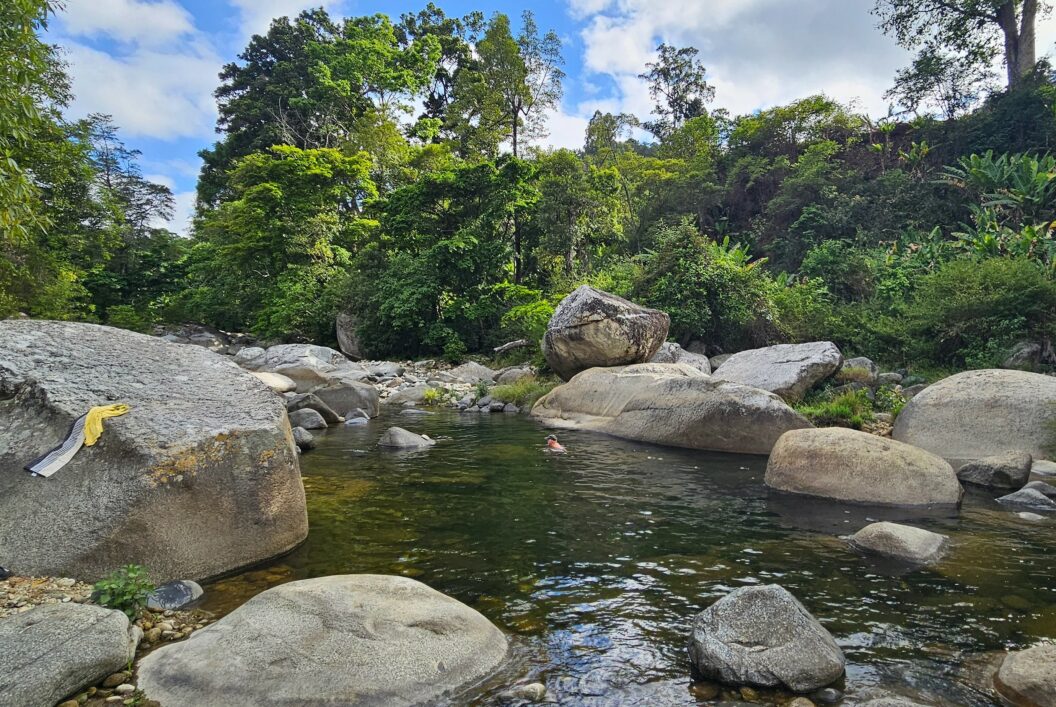
How refreshing!
The route that leads from Chimanimani along the Mozambican border to Cashel is described as scenic in the Bradt travel guide. It was logical that we drove along it on the way north. It took us almost three hours to cover the almost sixty kilometers. This detour was not worth it, because most of the time we drove through forest plantations and saw little of the surrounding area. The clay track has been ground to a fine powder by the trucks that transport tree trunks. After this trip, our car rear no longer looked white but red. (Luckily, we were able to turn on the air conditioning and keep the windows closed!)
We were happy when we reached the tarmac road in Cashel that took us to Mutare. Shortly after this bustling town, which lies at 1,120 meters above sea level, we turned east into the Honde Valley. We knew this route from last year and we were looking forward to it. (If there is a route that is scenic, then it is this one!) A short stop in Hauna, where we wanted to get permission for the campsite at the NRE powerhouse. However, the office was closed on Saturday afternoon. So, we drove without it and reached the small power station on the Pungwe River sixteen kilometers later. (The track had been expanded in the meantime and we only had to switch on the gear reduction a few times!)
What is now a campsite was the place where the workers slept when the power plant was built. Everything you need is here: 24-hour electricity (not a given in Zimbabwe!), running cold and hot water and light. The best thing, however, is just a few meters from the camp: a deep pool in the Pungwe River with crystal-clear water that you can swim in. (This is what it looks like in the Verzasca Valley in Switzerland – minus the many tourists!) We share the space under shady trees with a family from Harare and many birds that feel at home in the local forest.
























